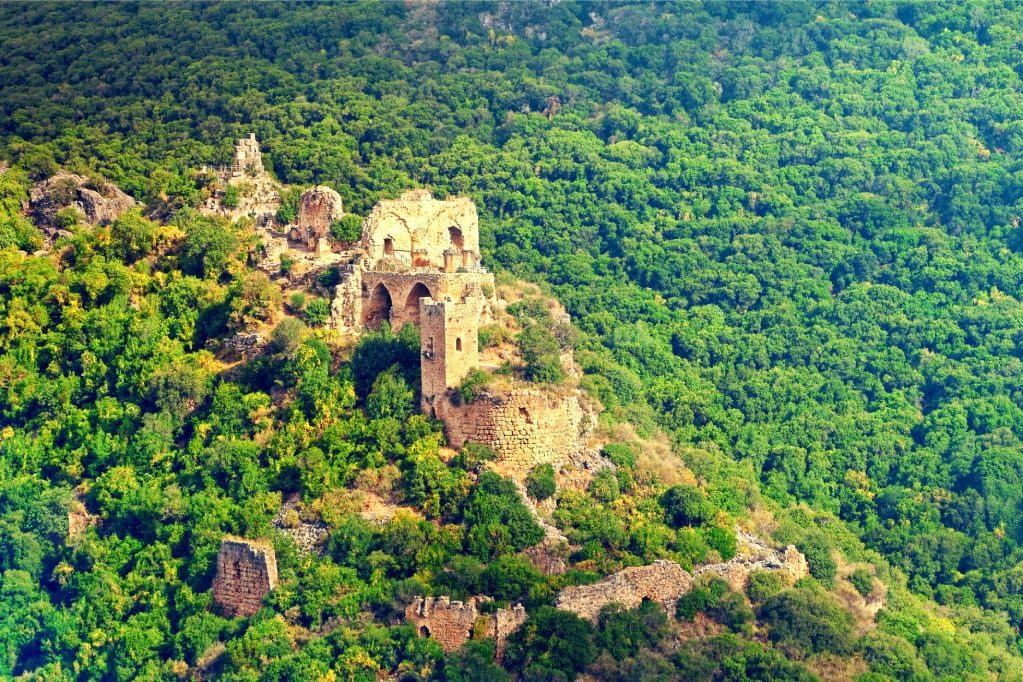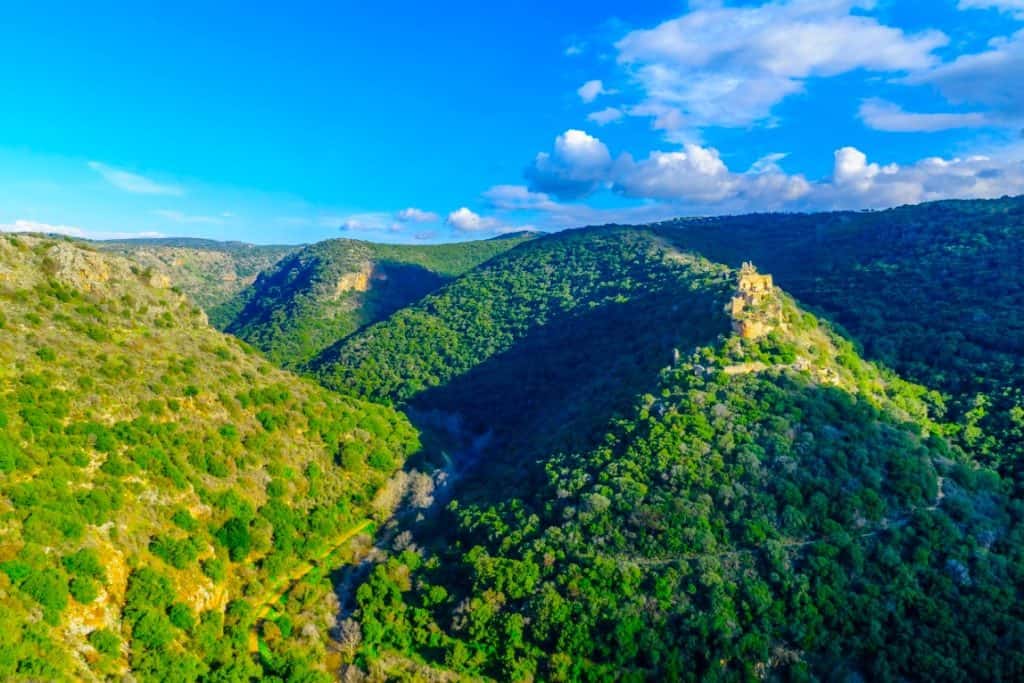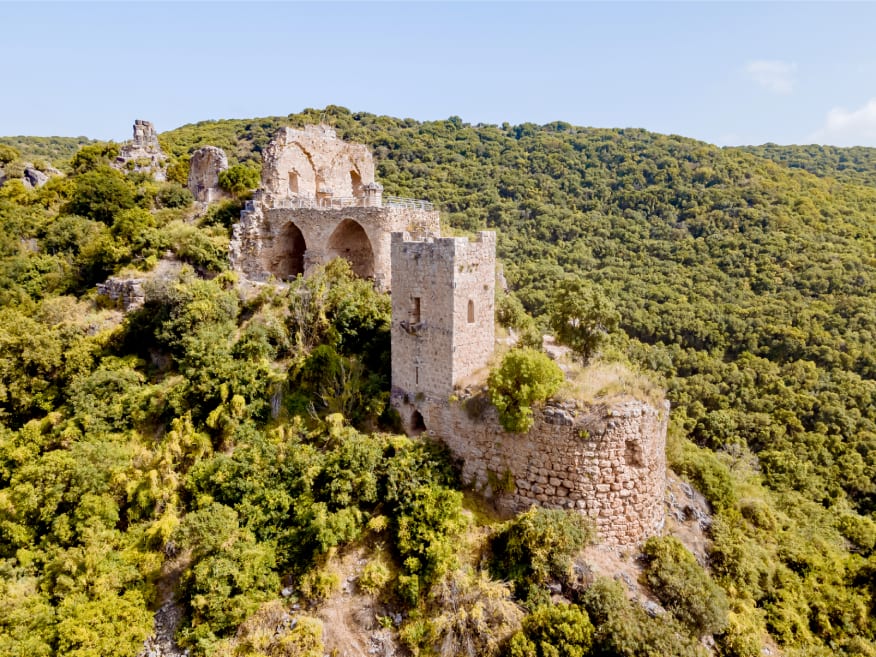Nestled amidst the picturesque landscapes of northern Israel, Montfort Castle is a testament to the rich history and architectural marvels of the Crusader era. Perched on a hilltop in the Western Galilee region, this medieval fortress offers visitors a captivating journey through time. In this post, we embark on a virtual tour of Montfort Castle, exploring its historical significance and the enchanting remnants that transport us back to a bygone era.

Montfort Castle, also known as Qal’at al-Qurain in Arabic, was constructed by the Crusaders during the 13th century. It served as a strategic stronghold for the military and religious orders that sought to establish a presence in the Holy Land. The castle was part of a network of fortresses built by the Crusaders to maintain control over key territories and protect their interests.
Architecture and Design:
The architectural design of Montfort Castle showcases the defensive prowess of the Crusaders. Situated on a steep hill, the fortress incorporated natural features into its defensive layout. The castle’s sturdy walls, towers, and battlements were constructed using local limestone, blending seamlessly with the surrounding landscape. The strategic placement of the castle atop a hill provided commanding views of the surrounding valleys, enhancing its defensive capabilities.
Park Goren

Montfort Castle – Exploring the Ruins:
Today, the ruins of Montfort Castle offer a fascinating glimpse into the castle’s past grandeur. Visitors can wander through the remains of the inner and outer courtyards, walk along the fortress walls, and explore the remnants of towers and chambers. Though partially destroyed over the centuries, the architectural elements that remain bear witness to the castle’s former splendor.
Nature and Scenic Beauty:
The castle’s location amidst the lush greenery of the Western Galilee region adds to its allure. Surrounded by rolling hills and abundant flora, the site offers breathtaking views of the surrounding landscape. Visitors can take leisurely walks along the castle’s paths, enjoying the tranquility and natural beauty that envelopes the ruins.
Teutonic Order

Furthermore, the Castle has an Educational Significance: Montfort Castle is not only a place of historical significance but also serves as an educational site. Informational panels throughout the castle grounds provide insights into the castle’s history, its role during the Crusader period, and the challenges faced by its inhabitants. Guided tours and educational programs further enhance the learning experience, offering a deeper understanding of the Crusader era and its impact on the region.
Hiking in the Area:
Montfort Castle is situated within the Nahal Kziv Nature Reserve, known for its scenic trails and hiking opportunities. Visitors can combine a visit to the castle with a hike through the reserve, exploring its diverse ecosystems, stunning waterfalls, and natural beauty. The hiking trails provide an immersive experience in nature, making Montfort Castle an ideal destination for outdoor enthusiasts.
Montfort Castle – Preserving History:
Efforts have been made to preserve and conserve the ruins of Montfort Castle, ensuring that future generations can appreciate its historical and architectural significance. Ongoing restoration projects aim to stabilize the structures and provide visitors with enhanced access to the castle’s remains, allowing for a more immersive exploration of its rich history.
In short, Montfort Castle stands as a captivating testament to the Crusader era, inviting visitors to step into the world of medieval fortresses and the tumultuous history of the Holy Land. The castle’s ruins, perched atop a hill in Western Galilee, offer a glimpse into the architectural marvels and defensive strategies of the Crusaders. Combined with its scenic surroundings and educational value, Montfort Castle remains a remarkable destination for history enthusiasts, nature lovers, and those seeking a captivating journey through the annals of time.







